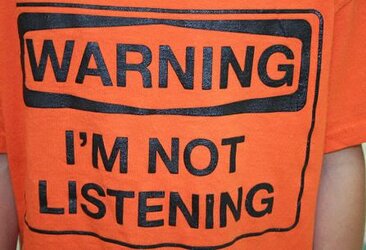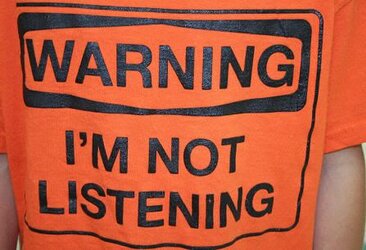-
Welcome to Overclockers Forums! Join us to reply in threads, receive reduced ads, and to customize your site experience!
You are using an out of date browser. It may not display this or other websites correctly.
You should upgrade or use an alternative browser.
You should upgrade or use an alternative browser.
What you think of this setup
- Thread starter data1
- Start date
- Joined
- Jun 17, 2010
- Location
- Marietta, GA
That's not a good idea. What happens when what's absorbing moisture is saturated? It'll drip, you don't want that in a computer.
- Thread Starter
- #23
That's not a good idea. What happens when what's absorbing moisture is saturated? It'll drip, you don't want that in a computer.
yes but just for that minimal condensation that you must deal with.
- Joined
- Aug 12, 2010
- Location
- Ringgold, Ga
- Joined
- Jun 17, 2010
- Location
- Marietta, GA
- Joined
- Jun 17, 2010
- Location
- Marietta, GA
You've just decided you're going to avoid the condensation? You're gonna up and break the laws of physics and just stay clear of any condensation...do you understand what causes condensation?
- Joined
- Aug 12, 2010
- Location
- Ringgold, Ga
Data, try reading up on dew point and condensation. I think it will be eye opening.
- Joined
- Sep 15, 2007
- Location
- Small town Emlenton, PA
Data1, you seem to not understand.
I'll back off and let you do your thing. Hopefully you won't be buying parts and coming back in a few weeks asking for help after ruining a few $300 in parts. And asking, "Whats wrong"?
Your way over your knowledge level. I wish and pray it works for you.
I'll back off and let you do your thing. Hopefully you won't be buying parts and coming back in a few weeks asking for help after ruining a few $300 in parts. And asking, "Whats wrong"?
Your way over your knowledge level. I wish and pray it works for you.
- Thread Starter
- #30
From the article:
"You can avoid beading one of two ways: either protect your components with a moisture absorbing material such as neoprene pads, or set the coolant temperature to be above the dew point (the temperature at which condensation starts to form) of the room. You can calculate the dew point in your room using this calculator. Fortunately, the HC-500A allows you to control the coolant temperature in 1°C steps, via the small screen and the three buttons on the front panel. "
"You can avoid beading one of two ways: either protect your components with a moisture absorbing material such as neoprene pads, or set the coolant temperature to be above the dew point (the temperature at which condensation starts to form) of the room. You can calculate the dew point in your room using this calculator. Fortunately, the HC-500A allows you to control the coolant temperature in 1°C steps, via the small screen and the three buttons on the front panel. "
- Joined
- Aug 12, 2010
- Location
- Ringgold, Ga
If you are going to do that it will not have any advantages over traditional water cooling...then you have to ask, why bother?
Also, you will have to change the settings nearly every day. Waking up and saying, oops I forgot, leaves you with a puff of smoke and fried components.
As Conundrum stated, though, it's your stuff, do what you want.
Also, you will have to change the settings nearly every day. Waking up and saying, oops I forgot, leaves you with a puff of smoke and fried components.
As Conundrum stated, though, it's your stuff, do what you want.

- Joined
- Jun 17, 2010
- Location
- Marietta, GA
Padding. Will. Do. Nothing. Once padding is wet on the outside you might as well just have water on the outside of your tubing. you need INSULATION. Something to prevent condensation from FORMING, not something to deal with it when it does form.
- Thread Starter
- #34
Padding. Will. Do. Nothing. Once padding is wet on the outside you might as well just have water on the outside of your tubing. you need INSULATION. Something to prevent condensation from FORMING, not something to deal with it when it does form.
Yes I understand that. Alright can you give me some directions on insulation? Sounds like a bigger project?
- Joined
- Jun 17, 2010
- Location
- Marietta, GA
You will need to insulate in a way similar to if you were to cool your computer with DICE. There is plenty of documentation on this in the extreme cooling section. You will also need to insulate your tubing, I've never worked with that so I can offer you no assistance in that regard.
- Joined
- Aug 12, 2010
- Location
- Ringgold, Ga
It can cool the water 12 C below room temperature without any condensation.
then to add paddings to that to be sure.
That depends entirely on the amount of humidity of any given day.
- Thread Starter
- #37
You will need to insulate in a way similar to if you were to cool your computer with DICE. There is plenty of documentation on this in the extreme cooling section. You will also need to insulate your tubing, I've never worked with that so I can offer you no assistance in that regard.
Ok neopads mentioned earlier are one way for insulation but going to research this.
That depends entirely on the amount of humidity of any given day.
Correct
- Joined
- Jun 17, 2010
- Location
- Marietta, GA
Ok neopads mentioned earlier are one way for insulation but going to research this.
You keep saying they absorb the water. You don't want absorption, if there's water to absorb, something has already gone wrong.
- Thread Starter
- #39
You keep saying they absorb the water. You don't want absorption, if there's water to absorb, something has already gone wrong.
Yes the article said that so it got kinda confusing but this article i recently found clearly uses neopads for insulation
- Joined
- Aug 12, 2010
- Location
- Ringgold, Ga
That article is from 2003 >.<
Similar threads
- Replies
- 21
- Views
- 2K


 What gives you that idea?
What gives you that idea?